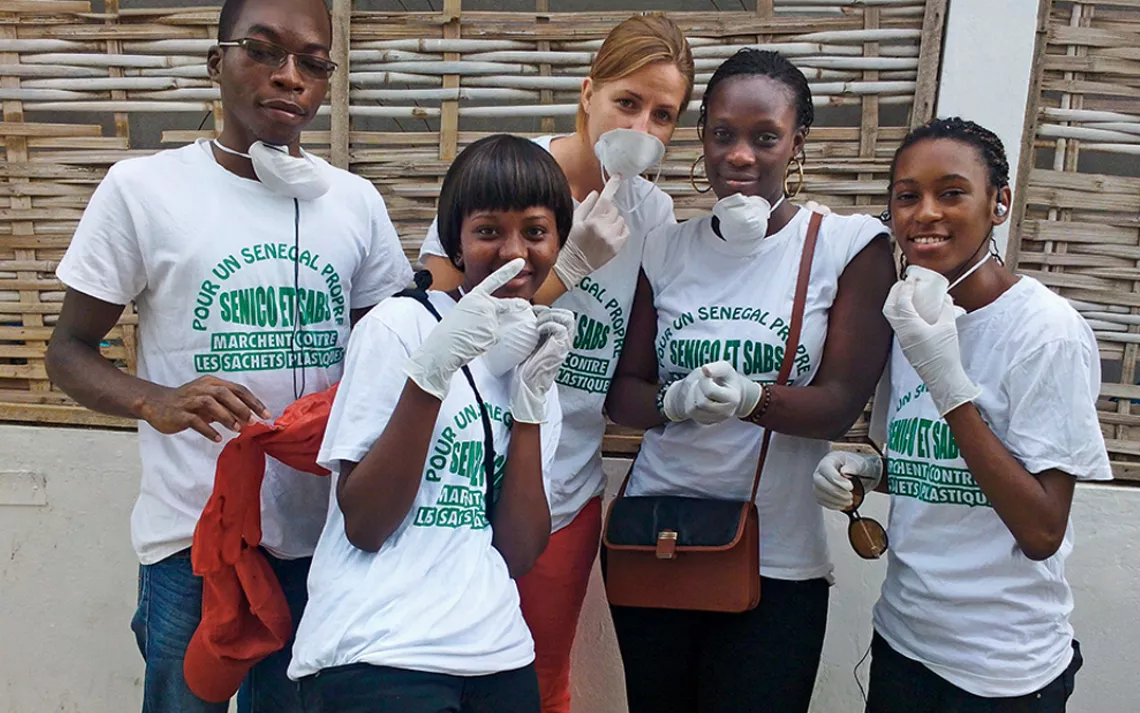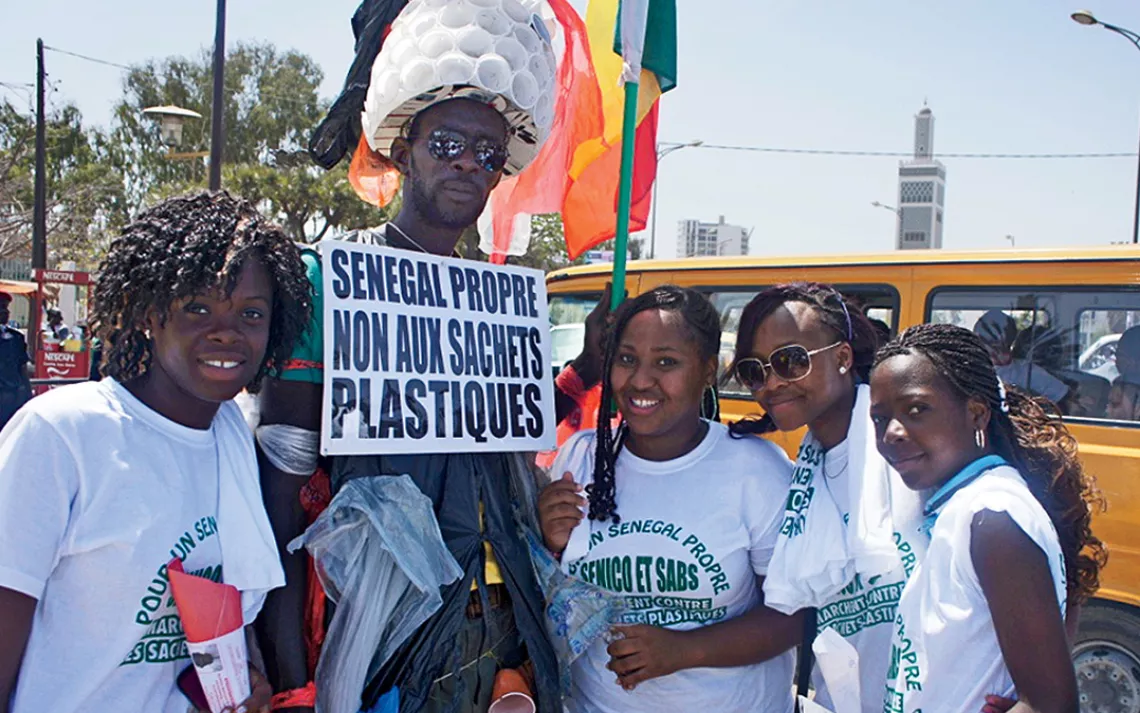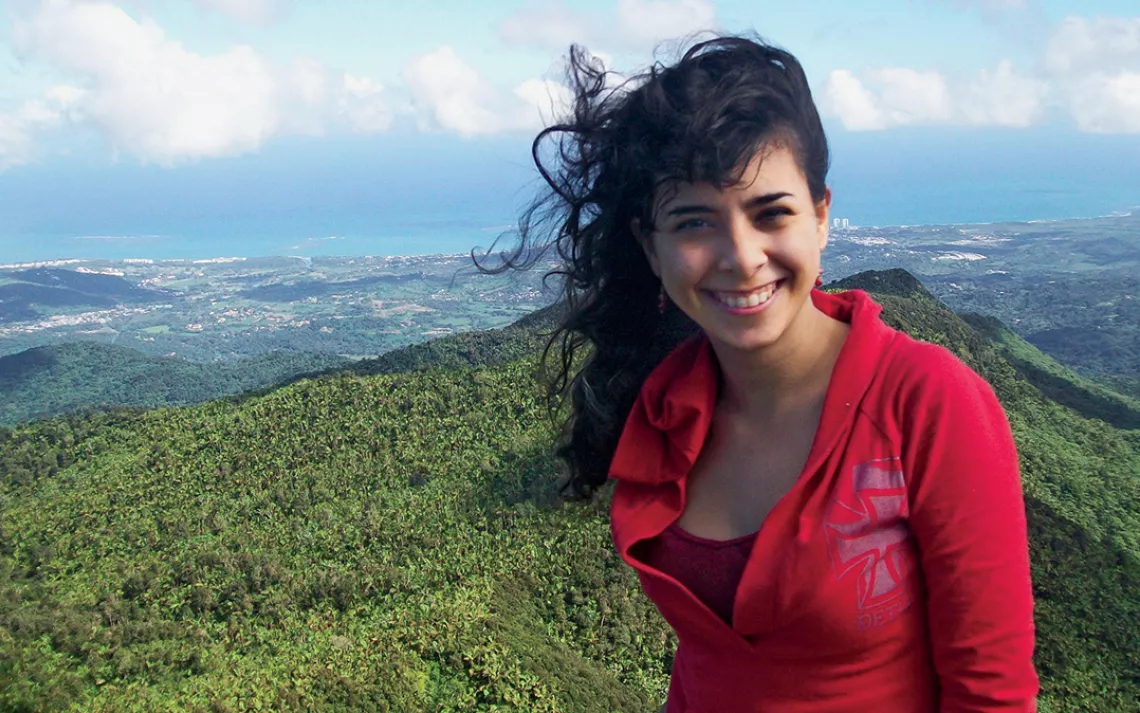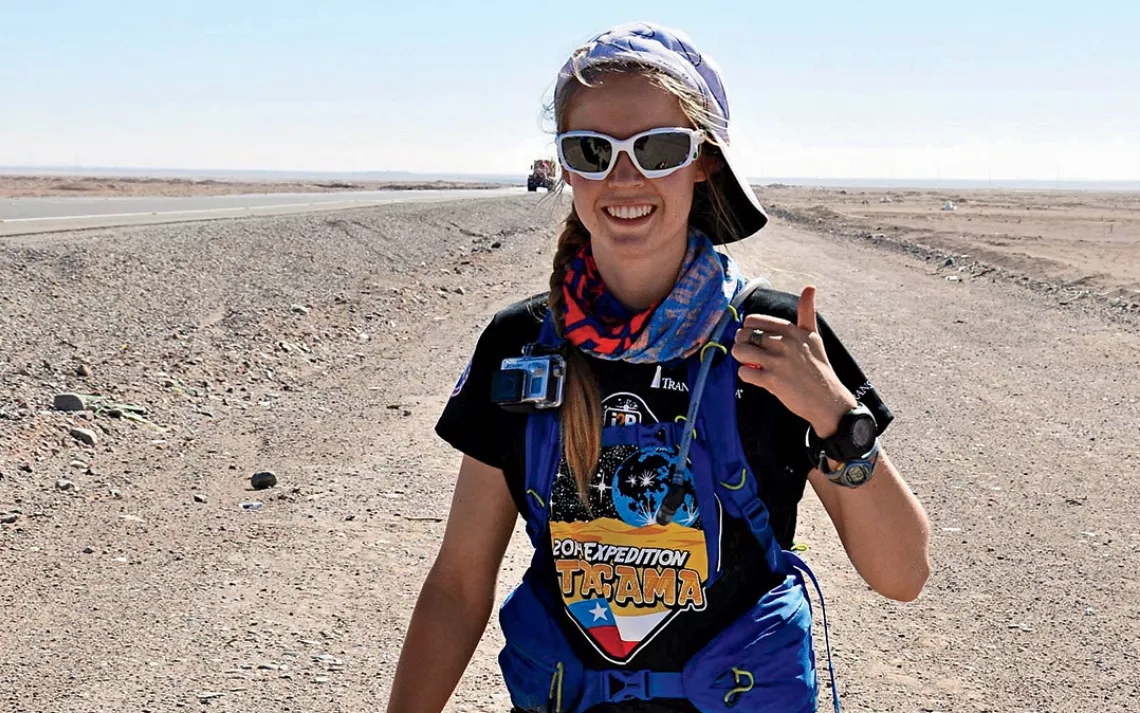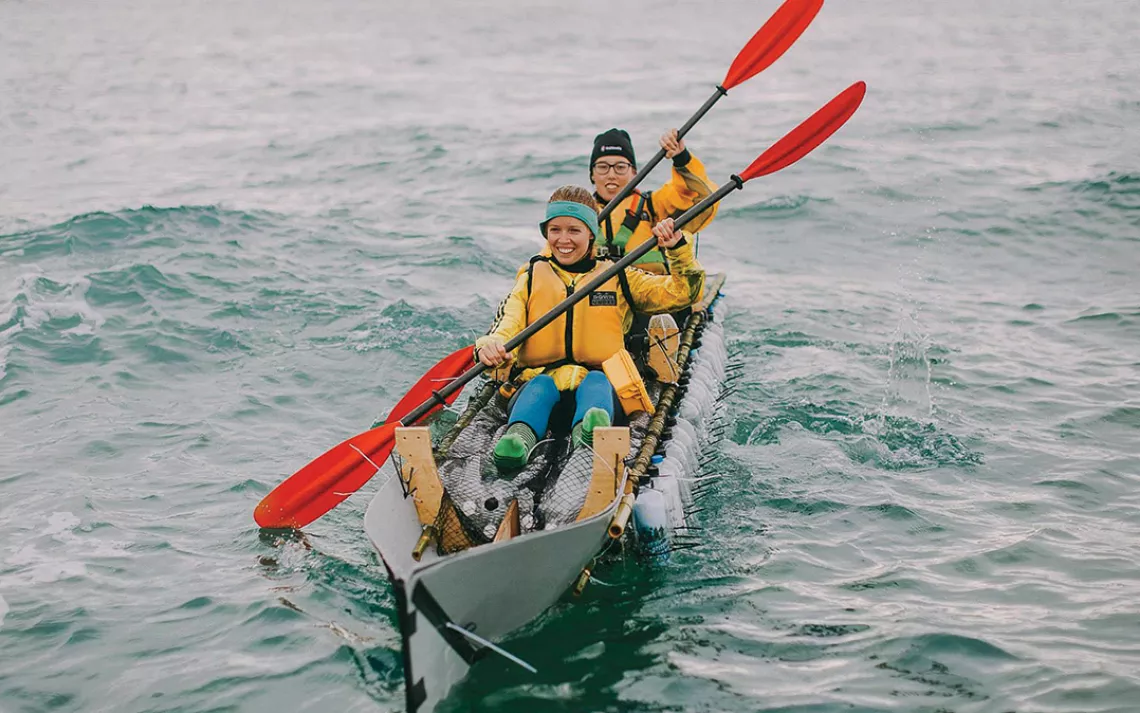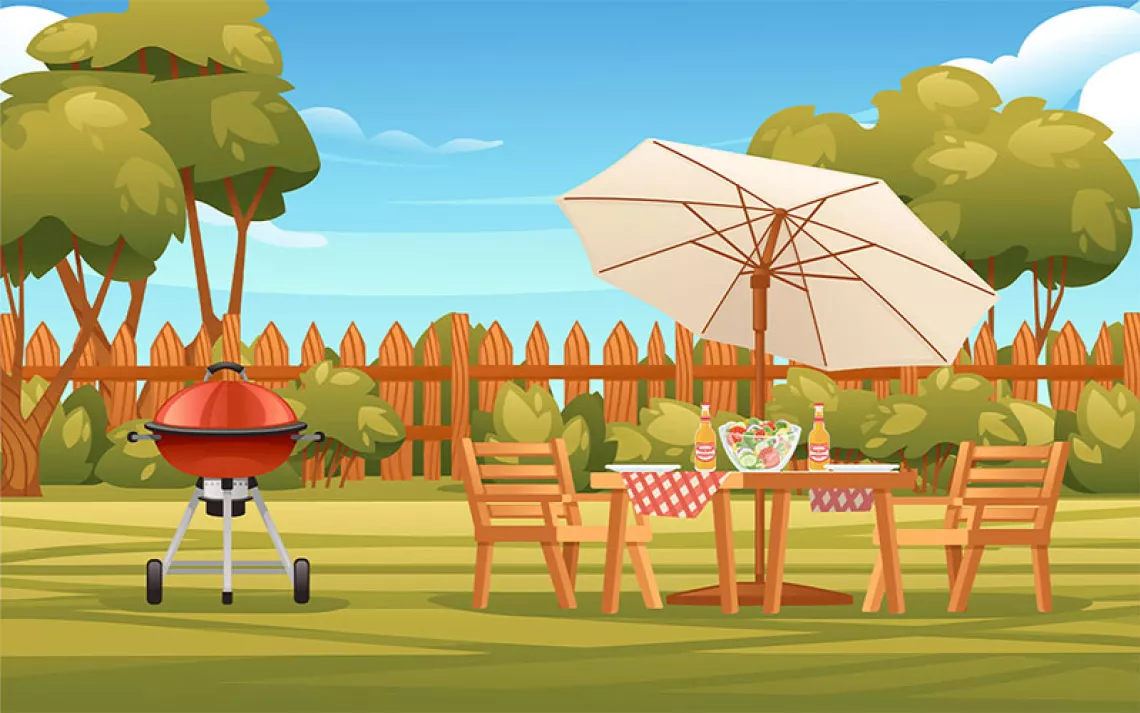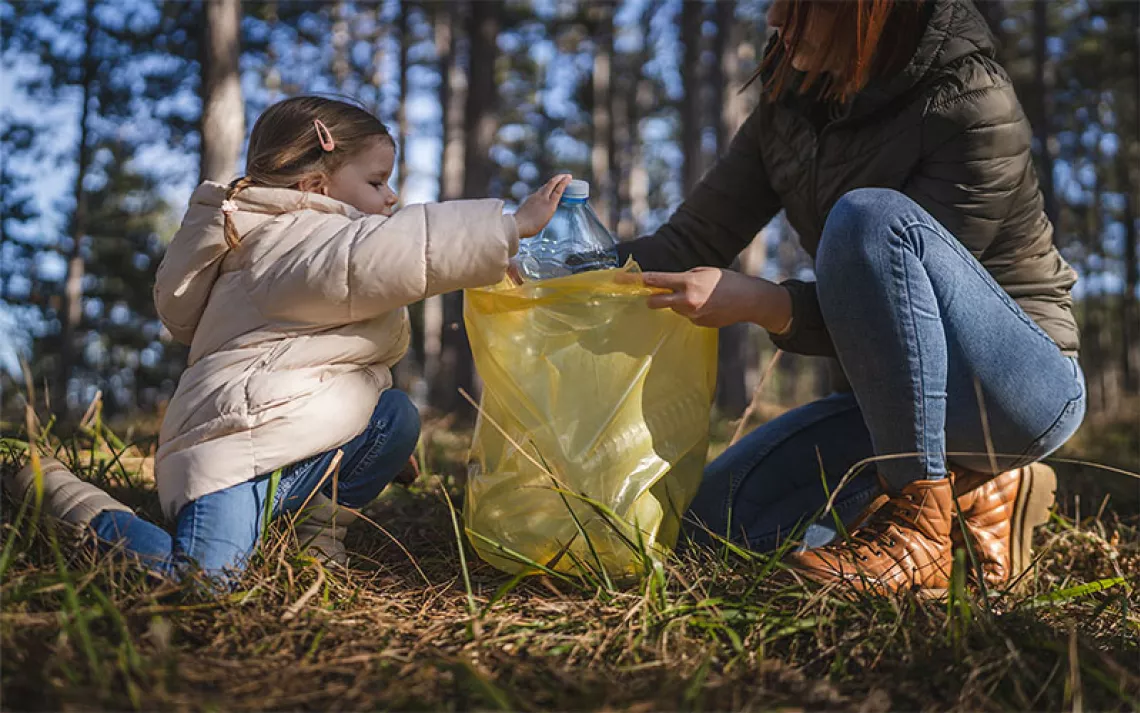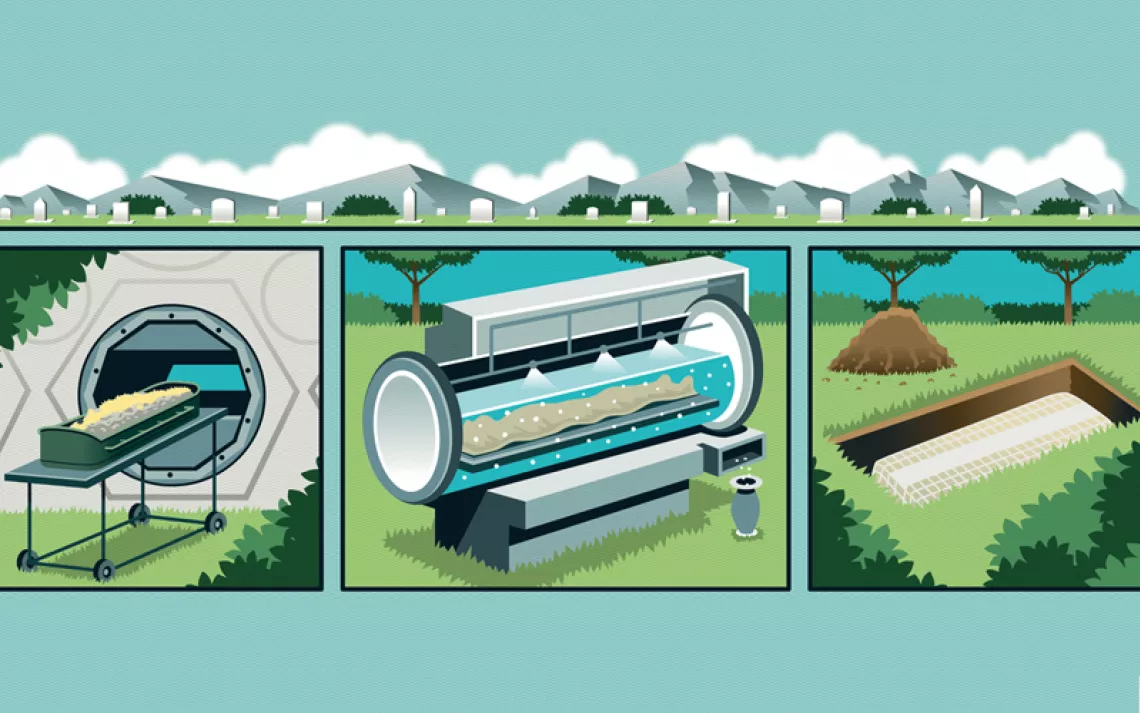How Student Activists Are Battling Plastic
At colleges in Senegal, Puerto Rico, and New Zealand, students fight to phase out the nonbiodegradable stuff
WHEN DONALD BAMBARA AND SIX classmates established their university's first plastic-recycling program in 2013, they were initially met with incomprehension. The students at the Higher Institute of Management in Dakar, Senegal, live in a seaside city where floating plastic is as common as floating fish—but recycling is rare.
"The whole community was against us," Bambara, 21, says over a crackling Skype connection. "Everyone was laughing and calling us garbage collectors. It was a big joke to them." As Bambara picked up trash, he wore his business school's uniform, a suit and tie.
In the streets of Dakar, Bambara sees "plastic everywhere, to the left, to the right." Clear bottles, blue caps, pink cups. Most of the cups once held Cafe Touba, Dakar's signature brew, which blends coffee with sugar, cloves, and djar, a type of black pepper said to be an aphrodisiac. The coffee sells quickly because the people of Dakar like their coffee as much as they like their fish—that is, as Bambara says, "a lot, a lot, a lot."
The problem is that when people finish their drink, they just toss the cup. These plastic containers take hundreds of years to decompose, an amount of time that carries significance in this city bordered on three sides by the Atlantic Ocean. The cups contribute to the 18 billion pounds of plastic discarded into the world's waters every year. Since fish nibble on them and die from digestive blockage, the cups may also be partly to blame for the decline of Dakar's fisheries.
In recent years, local fishermen have had to paddle into deeper and deeper waters to get good hauls. Every evening, they pull their brightly colored boats onto the city's beaches and lay their catch on wooden tables: red carp, sardines, lobsters, sea urchins. Nearby grillers welcome them by firing up hot coals, and vendors start brewing extra coffee.
Recycling infrastructure is so new to Dakar that Bambara and his fellow activists had to collect and process their school's plastics themselves. To make recycling bins, they plastered green tape on the covers of trash cans around campus.
He didn't hold a grudge when other students teased him for his efforts: "People laughed at us," he says, "because they didn't know about all the environmental factors involved. When people don't have knowledge, you cannot blame them."
During their first semester, the group collected 440 pounds of plastic. Once the bins were full, the students sorted the items, unscrewing caps from bottles and categorizing by plastic type. The recycler who picked up the materials, Bambara says, "wanted reduced volume, so we used our feet and jumped." The popping plastic sounded to him like distant fireworks.
THREE THOUSAND MILES AWAY, in Puerto Rico, 24-year-old Amira Odeh had no problem getting peers on her side. She did clash with her university's administration, however.
In 2013, Odeh delivered a proposal to administrators at the University of Puerto Rico at Rio Piedras, challenging them to ban bottled water and install new drinking fountains. They didn't respond for more than a year, maybe because they mistakenly thought that Odeh and her student group, No Mas Botellas, would give up.
Or perhaps they simply couldn't imagine living without plastic bottles. To many Puerto Ricans, bottled water is a reminder of the drought that afflicted the island in the mid-1990s.
Since she was only four years old at the height of the drought, some of Odeh's first memories formed around it: a dry bathtub, a quiet washing machine, a dying bird. She remembers seeing filthy water sputter from the tap, and waiting in long lines for the bottled stuff.
As a preschooler, she learned that she lived in a finite world, on an island the size of Yellowstone National Park, where even the seawater lapping at the shores couldn't save her if the land dried up. "It really shocked me," she says.
People got so used to drinking out of plastic bottles that university students "forgot that water fountains existed," Odeh says. "So the administration forgot to take care of the school's drinking fountains, and those fountains were so horrible. They were moldy!" Rumors of E. coli spread around campus. "For years, you had to be brave to drink from them."
The drought habituated Odeh to plastic bottles but also inspired her to rally against them. In college, she began to ask questions about the bottles. She wondered, where do they go when empty? That's a sore subject in Puerto Rico, where the island's 14 landfills are filling up; some predict they'll top out by 2018. Meanwhile, the recycling rate is stuck at 11 percent.
Odeh also looked into where plastic bottles come from. When she learned that a liter of bottled water requires three liters of water to produce, she calculated how many bottles her 15,000 classmates consumed. Every month, they bought 60,000 bottles from the school's cafeteria and vending machines. She also realized just how little her peers knew about environmental issues: "In the science departments, there were a lot of people who didn't even know what a water footprint is. I was like, 'But you study science. And you live on this planet. What happened?'"
Ultimately, Odeh convinced her school to replace its old drinking fountains and to pass a bottle ban—the first in Latin America. Her victory required grit: She campaigned for four years, both on campus and online, and completed a summer training program with the Sierra Student Coalition to hone her leadership skills. It also required luck, which came in the form of a new, eco-minded chancellor.
Though the ban won't go into effect until late this year, Odeh is already noticing changes on campus. As a result of her club's educational outreach, 70 percent of students are aware of the mission of No Mas Botellas.
"Back when we started," Odeh says, "no one had reusable bottles. Now I see about half the students carrying one in their backpacks."
To refill their metal containers, they lean into new drinking fountains decorated with stickers that read, "FREE AND CLEAN WATER"—a statement so simple that it invites students to wonder why things would ever have been otherwise.
ON A MUCH BIGGER ISLAND on the opposite side of the world, 23 young activists gathered in New Zealand's Abel Tasman National Park last March to launch a three-day sea voyage. They got no pushback from their community. In fact, they enjoyed a cascade of encouraging comments on the Plastic Bottle Kayak group's Facebook page. But they did face a stormy and choppy sea. They were confident that they wouldn't sink—even though four of their kayaks were handmade from discarded bottles, zip ties, and bamboo.
When it started to pour, Bokyong Mun, an 18-year-old student at the University of Otago, welcomed it. "I was actually really excited. We were sitting in the open sea with beautiful wildlife around us, and I felt all this rain falling on my face," she says. Through the water coming down, Mun could make out the park's stunning granite outcrops and golden beaches. The view inspired her to believe in the possibility of a greener future.
Though Abel Tasman was heavily farmed before earning protected status in 1942, its forests are regenerating, evidenced in part by the pukeko's loud crowing and the bellbird's ringing notes. The fur seals that the adventurers spotted sunbathing on rocks were on the brink of extinction back in the 1970s but now number in the hundreds of thousands.
As the activists paddled, they counted their strokes in Maori, a salute to the native people who lived there for centuries. "Tahi, rua, toru, whā!" they yelled. One of the leaders of the group, Florence Reynolds, tried standing on her plastic-bottle kayak, fluttered, laughed, and fell.
Three years earlier, Reynolds, 22, a dual psychology and ecology major at the University of Auckland, had gotten interested in plastic on a more serious trip—a beach cleanup during which her environmental science class collected 10,883 pieces of plastic. She was assigned to write a paper about the trip and got emotional reading the scientific journals, which described animals slowly dying of starvation after filling their bellies with plastic.
"Single-use plastic is just really stupid," she says. "We design it to be used once, but because it's plastic, it lasts forever." The next summer, whenever she visited a beach, she picked up trash. Then she dared herself to live without single-use plastic for a year.
She couldn't do it. "I would buy something that looked like paper, and then I'd discover that it was plasticized on the inside. It was just impossible to avoid all plastic," she says. "We're often told that consumers are to blame for making bad choices, but I realized that I didn't really have a choice."
In 2013, Reynolds and two fellow Auckland students, Shruthi Vijayakumar and Daniel Cullum, brainstormed ways to call attention to the absurdity of single-use plastic. At one party, Vijayakumar and Reynolds spent the entire evening googling plastic-bottle boats. The idea stuck. That May, they tested their first handcrafted rafts on a 60-mile expedition down the Whanganui River.
Last March, they went out on an even sturdier fleet of plastic-bottle crafts and added an educational component to their journey: Before taking to the sea, they set up a Facebook page and blog and invited university students from across the country to join the journey, including Mun, who lives 900 miles away from Reynolds.
Some of the kayaks' 1,040 bottles—donated by a recycling facility—contained notes from children. "Take out the pollution to make the turtle happy," one kid wrote. "Mermaids are my favorite sea animals. As are narwhals," another scrawled in red marker.
On the first day of the trip, two bottles detached from one of the kayaks, though nobody sank. In fact, the team had the opposite problem: The kayaks sat too high on the water, forcing their navigators to paddle harder.
"If we can make these awesome kayaks out of waste products, what else can we do?" Reynolds wonders. "Could it be possible to go without plastic if businesses and consumers come together? We want to prove that it's not impossible to rethink the status quo."
 The Magazine of The Sierra Club
The Magazine of The Sierra Club
